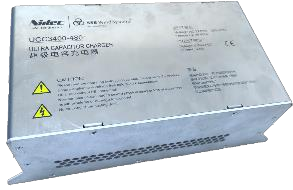Wedoany.com Report-Dec 27,The UK’s latest Clean Power 2030 roadmap promises to make offshore wind the ‘backbone’ of the British electricity system by tripling offshore capacity to around 50 GW. With the industry now poised for rapid growth, Paul Cairns, CEO of Charge Offshore, calls on developers to facilitate a cleaner, lower-carbon expansion by planning operational electrification into wind farm designs.
“With the government’s latest Clean Power roadmap shining a new spotlight on offshore wind, now is the perfect time for the industry to its shift focus towards more sustainable growth. While the sector is critical for reaching the UK’s low carbon electricity targets and for transitioning to a cleaner, greener energy system, parts of the supply have yet to modernise and reach technological parity with broader in-dustry.
“Operations and maintenance (O&M) fleets, for example, which include crew transfer vessels (CTVs) and service operation vessels (SOVs), are indispensable for maintaining efficiency, longevity, reliability, and crew safety during offshore wind operations. However, traditional fleets usually rely heavily on burning diesel to run, so this creates a quandary for a sector positioned at the forefront of the net zero transition.
“The solution is quite clear: electrifying O&M fleets will be essential for unlocking sustainable, low-carbon growth in the offshore wind industry.
“And while the sector has made steady progress towards fleet electrification, the lack of sufficient charging infrastructure continues to hold back wider adoption. However, this period of accelerated industry growth actually presents developers with the opportunity to design in advanced charging systems from the start, offering a streamlined and cost-effective solution for powering all-electric fleets.
“With offshore charging systems, vessels can be charged with 100% emissions-free power directly from turbines or offshore substations, greatly improving endurance and removing the limitation of shoreside charging. Not only do these electric systems alleviate and in some cases eliminate Scope 1 carbon emissions, but they have the added benefit of greatly reducing reliance on volatile oil markets.
“Additionally, adopting electric vessels with offshore charging solutions synergises well with regulatory drivers like the EU’s Emissions Trading Scheme (ETS). In the coming years, this scheme will be expanded to include O&M vessels so operators that transition today can get out ahead of regulatory requirements and avoid future non-compliance costs.
“The offshore wind industry has the opportunity to seize this moment and truly lead by example. As wind farm installations expand to meet ambitious global targets, the environmental impacts of this growth will be scrutinised. By investing in electrified O&M fleets and charging infrastructure now, the industry can set a precedent for sustainable growth while unlocking long-term cost savings and operational benefits.
“Advanced offshore charging technologies are available right now ready to be scaled with the industry, and the early integration of these systems into wind farm designs will not only help decarbonise vessel operations but also strengthen the renewable energy ecosystem as a whole. As we look towards 2030 and beyond, fleet electrification represents not just an environmental imperative but also a strategic advantage, so now is the perfect time for the industry to act decisively and embed electrification into its very core.

















